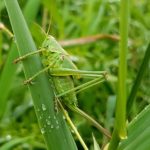Pathogenic nematodes are microscopic roundworms, but they represent a BIG problem for growers and turf professionals. In fact, according to a study published by the Society of Nemtaologists, pathogenic nematodes are responsible for an estimated 14% loss of all economically important crops worldwide, translating to over $100 billion annually.
That’s a big problem.
And it’s been a challenging one to address due to the fact that pathogenic nematodes feed on plant roots, damaging them and draining nutrients from the plant from underground. This can decrease yields and increase the plant’s susceptibility to other stresses.
Growers and turf professionals suffering from nematode infestations on their fields are often faced with two options: (1) pay a small fortune to decimate all biology within the soil via a toxic nematicide or (2) ignore the problem, and deal with the consequences.
But there is a new option in development, and a recent study by Holganix showed some promise in addressing this issue. How much promise? On the order of a 75% reduction in the lab and a 50% reduction in the field.












